How To Learn Anatomy For Art
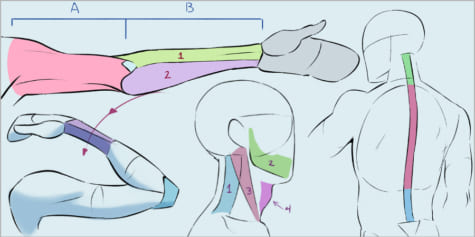
Understanding the structure of the human body is key to improving your character illustrations! With this illustrated tutorial by Eridey, learn more about basic, muscles and discover how the different parts of the body are connected to each other.
The fundamental to improving is to do our best and put our heart into what we do. Anatomy is not an easy subject, but I hope that this article can be a quick guide for you and get you in the mood to keep learning. Let's start with the building blocks of the man figure:
The spine is the body's support, also assuasive motion in the torso. Its vertical shape differentiates humans from other species. It is not a directly line, but a curve. Its shape makes the pelvis and the rib cage tilt slightly. Let'south divide it up into iii parts to see it better:
- Cervical spine — supports and provides mobility to the head
- Dorsal or thoracic spine — supports the ribs.
- Lumbar spine — a picayune before the pelvis, connected to the sacrum.
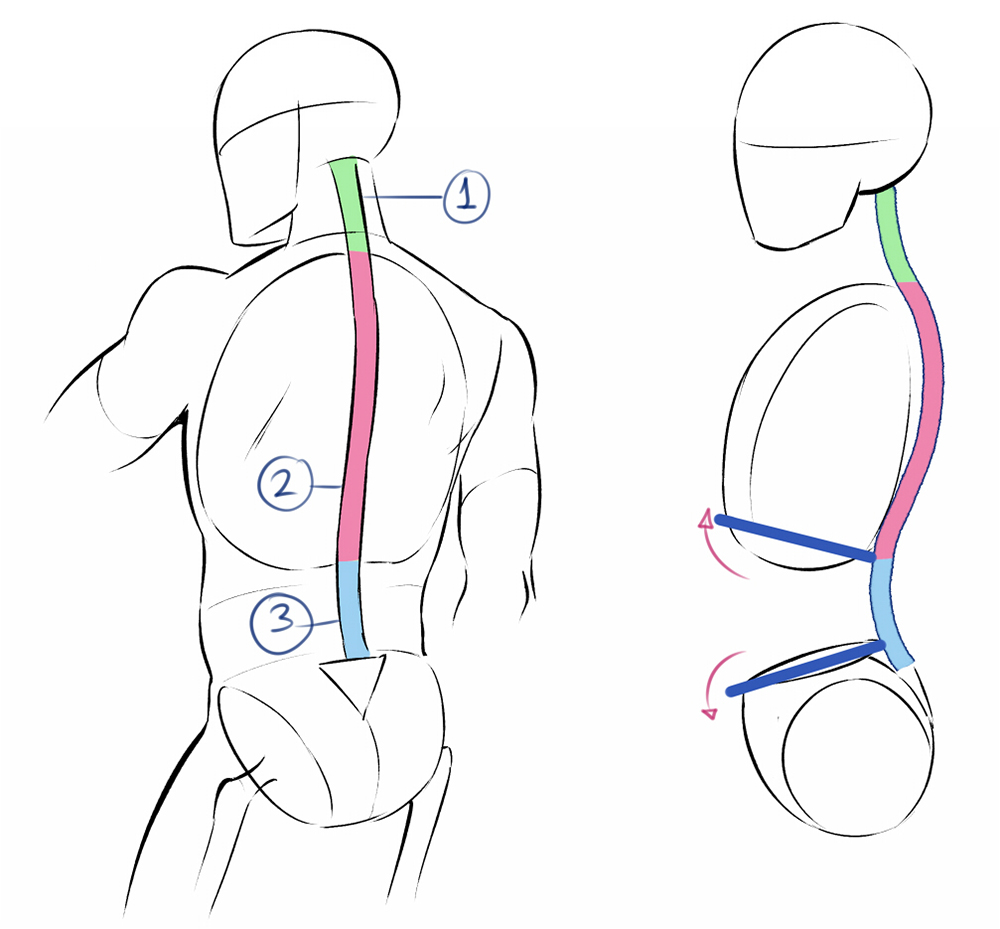
In the cervix, the cervical spine (1) is located just behind the jaw (2). At that place are a variety of muscles that operate the movement of the head. The well-nigh visible ane has a very, very long proper name (sternocleidomastoid!), but you can easily recognize information technology past its 5 shape, parting from the ear to the heart of the clavicles (3). In the center of these muscles is the Adam's apple tree, which is more than prominent in men (iv).
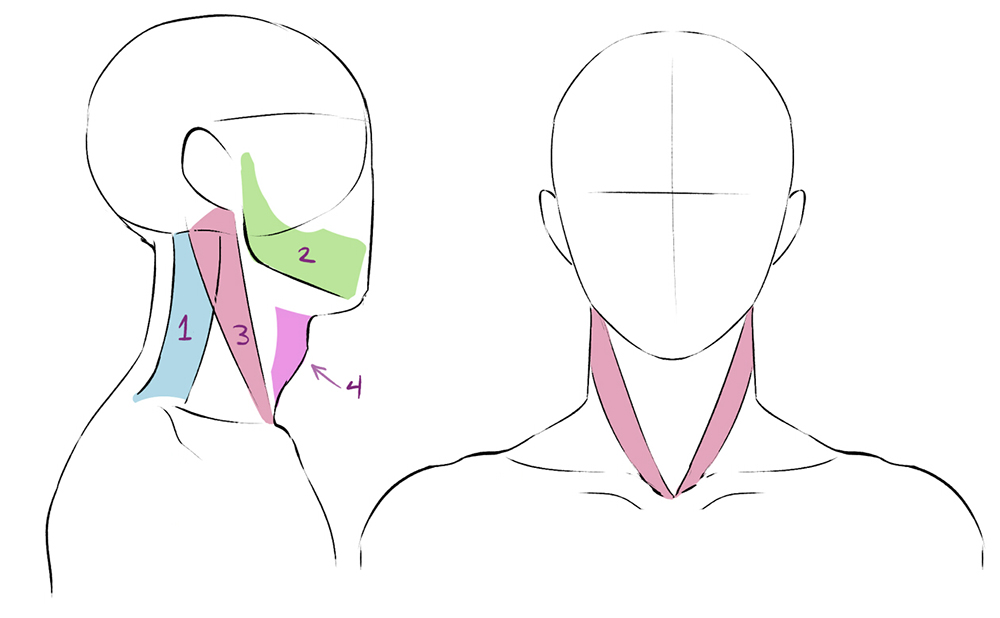
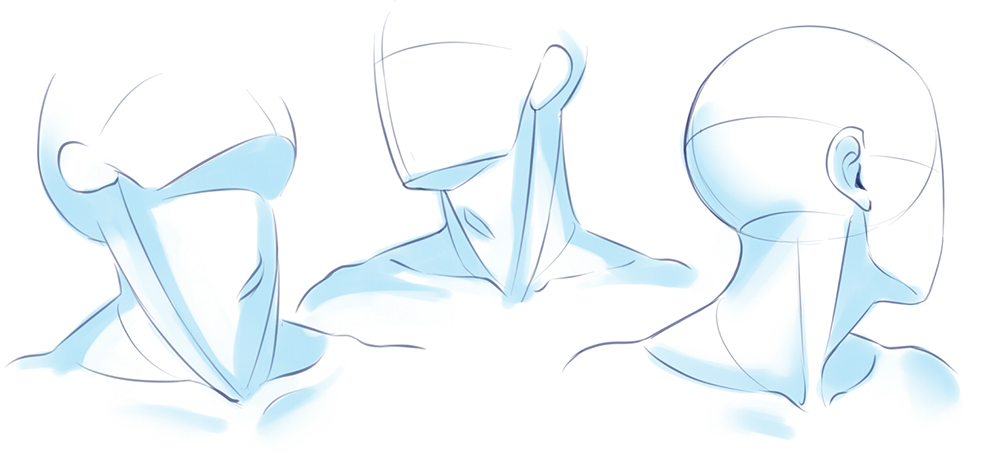
The dorsal spine is the part that connects to the arms. Yous tin draw it in many ways, I similar to requite it an ovoid shape that resembles the shape of the ribs (1).
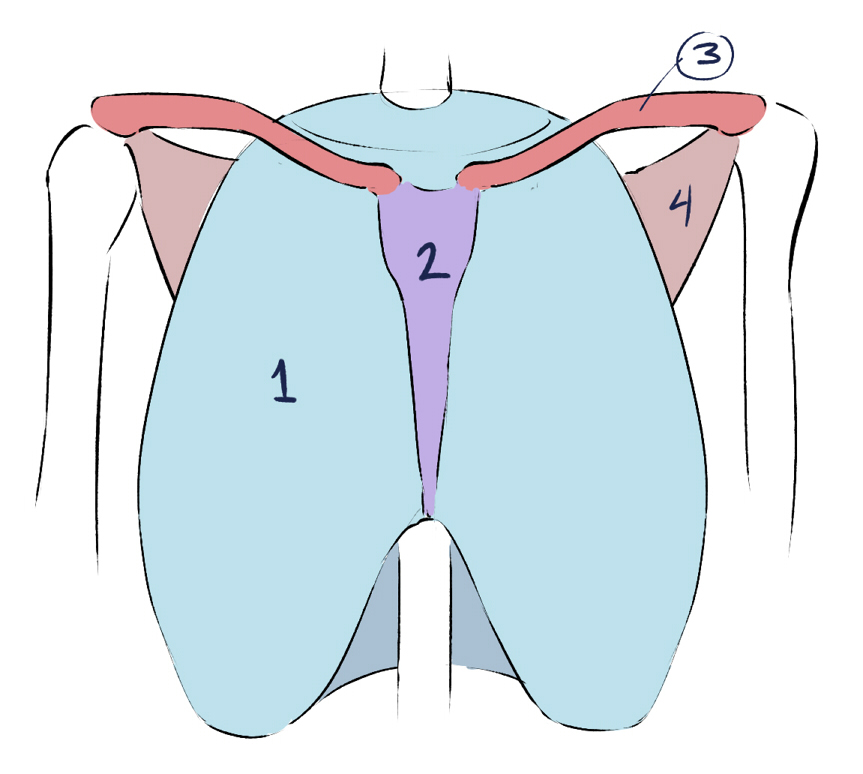
The sternum (ii) closes this construction in the front, creating, with the spine, an imaginary line that divides the body into two. Apply them as a guide!
The clavicles (3) are like a wheel handlebar, y'all tin think of them as a shoulder support. Every time the arms move, they will change direction.
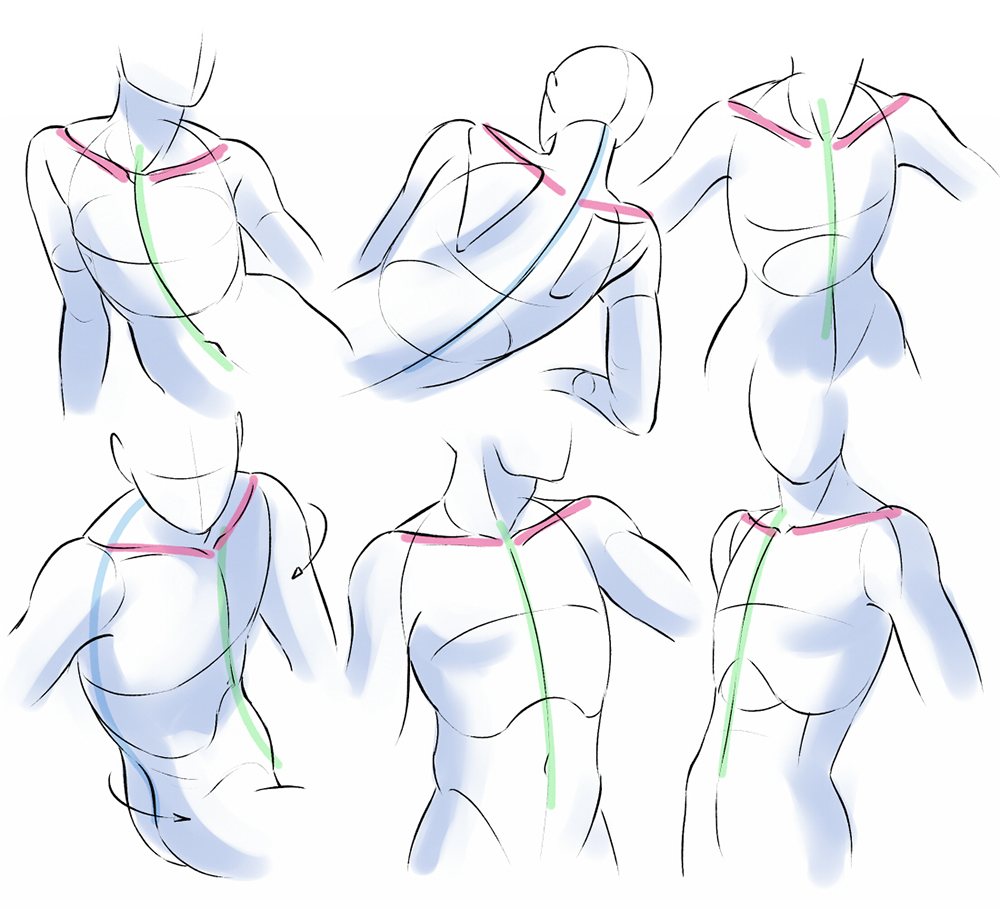
In the dorsum, y'all will detect the scapulae or shoulder blades. They are triangle shaped and assistance move the artillery. The shape of the dorsum changes following the movements of these bones.
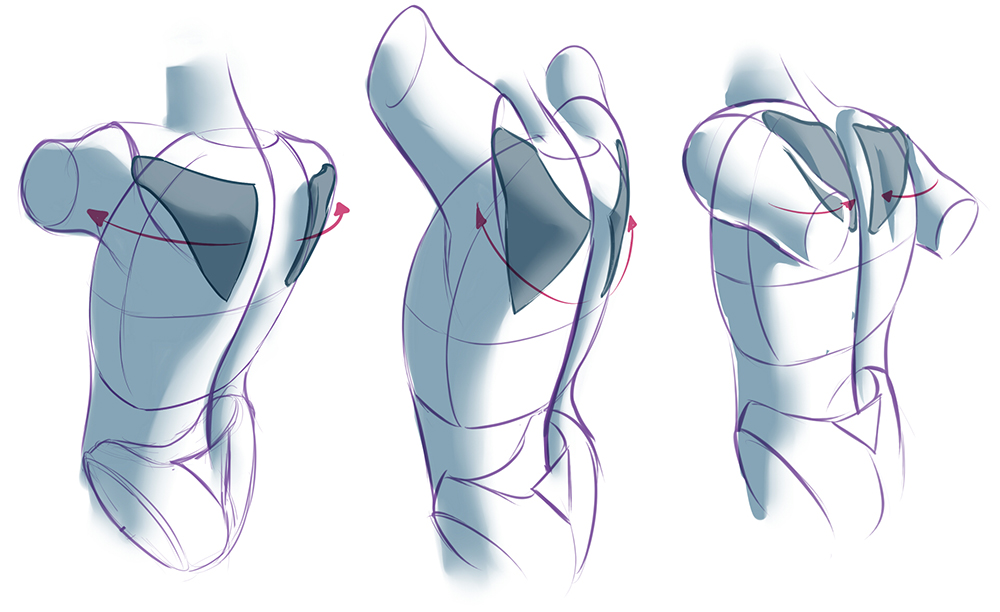
The pelvis is located at the end of the torso, connected to the lumbar spine from the sacrum (1). On both sides you can see the ilium (2); and in the front end, the pubis (three).
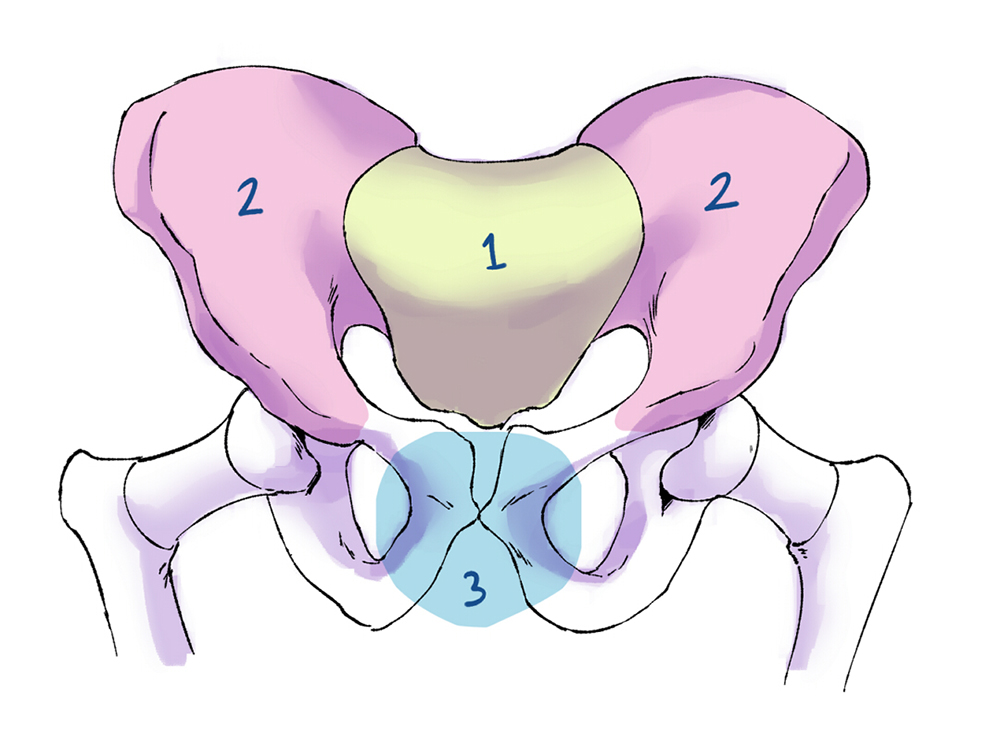
Equally these are somewhat irregular bones, I similar to simplify them past cartoon a pair of discs for the ilium, and the sacrum equally an inverted triangle.
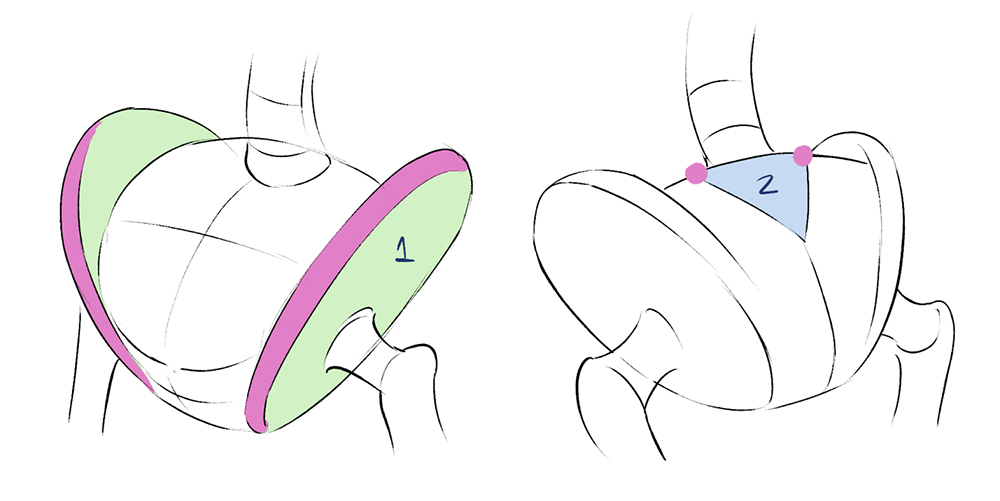
The ilium (one) volition guide you lot to draw the angles of the hip. On the back, these two dimples at the terminate of the spine, earlier reaching the buttocks, will assist us identify the sacrum (ii).
Note that female hips are more often than not wider than male person hips — one of the chief differences.
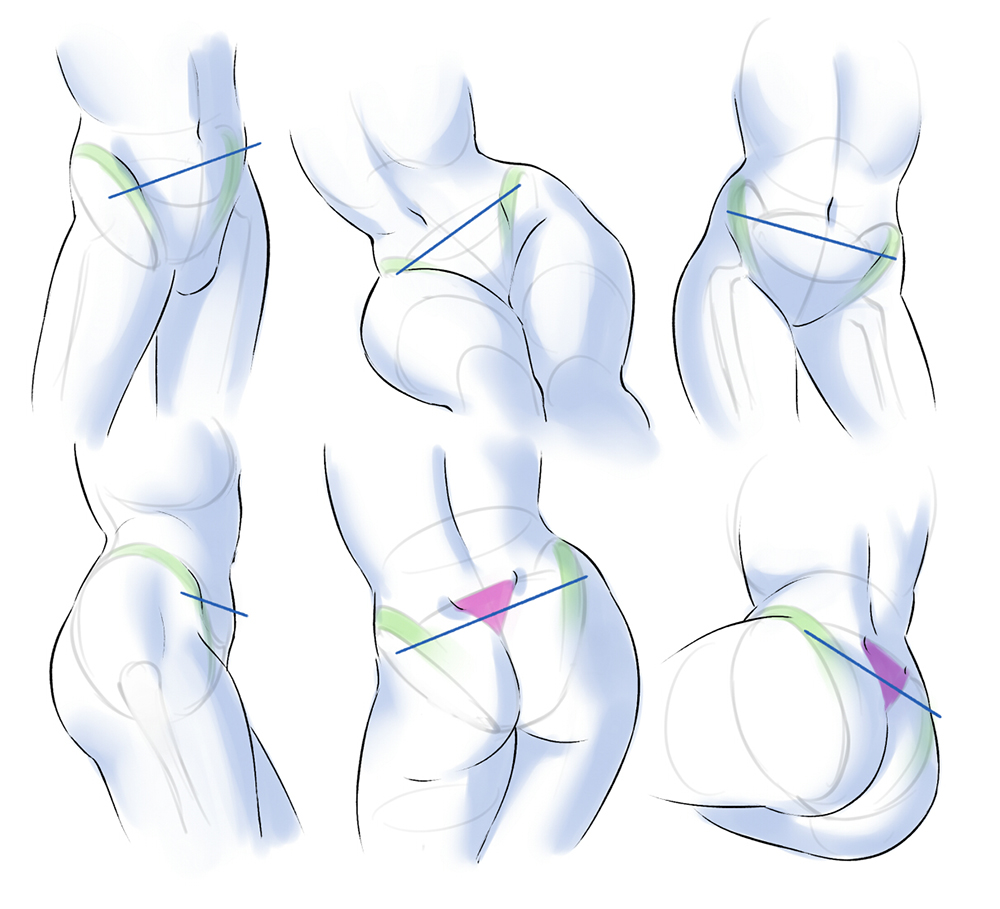
Limbs
Limbs can motility in many ways, merely knowing their limitations will salvage the states from cartoon unrealistic poses (or bone-breaking poses, ouch!).
Artillery:
In the upper part of the arm (A) there is the humerus, a long and strong bone that connects to the elbow and articulates the forearm (B).
In the forearm y'all volition find the radius (one) and the ulna (2). These bones cross to allow the rotation of the wrist. Some artists draw part of the forearm as a box to define its volume (3).
Tin you encounter a tiny lump simply behind your wrist? (four) It is part of the ulna. You can use information technology as a reference point to locate the orientation of the arm.
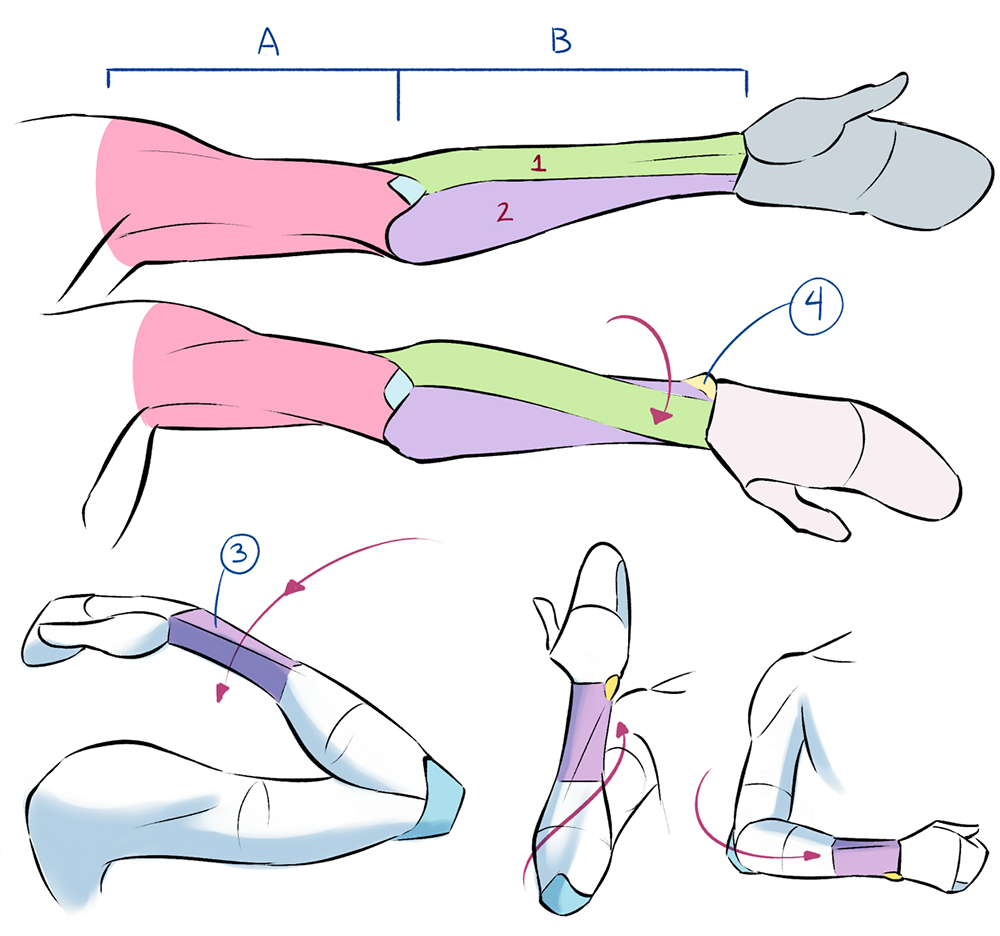
Legs:
In Fig. A we have the leg bones:
The femur (1) in the thigh; the articulatio genus (two) in the middle of the leg; the fibula (iii) and the tibia (4) in the calf expanse.
The legs should back up the body and give information technology the rest it needs, just at that place is a item that sometimes escapes united states of america: the legs do not have completely vertical line. In lodge to reach residuum, at that place must be rhythm. Notice the slight inclination in the femur from the hip to the knee, and the curves (fig. B) that create the contour of the leg (side view).
Other interesting details about the leg:
Between the hip os and the femur, there is a space that can be seen as an indentation in the peel, mainly in men who accept less muscle mass in that area.
In effigy C, we have the ankle. Its bones are placed at different heights, with the fibula on the outer side (*) being lower.
Figure D is a back view of the genu. On the outer side (*) the muscles exercise not generate also much change in the contour, merely on the inner side a modest lump is created (I have also pointed this out in figure A).
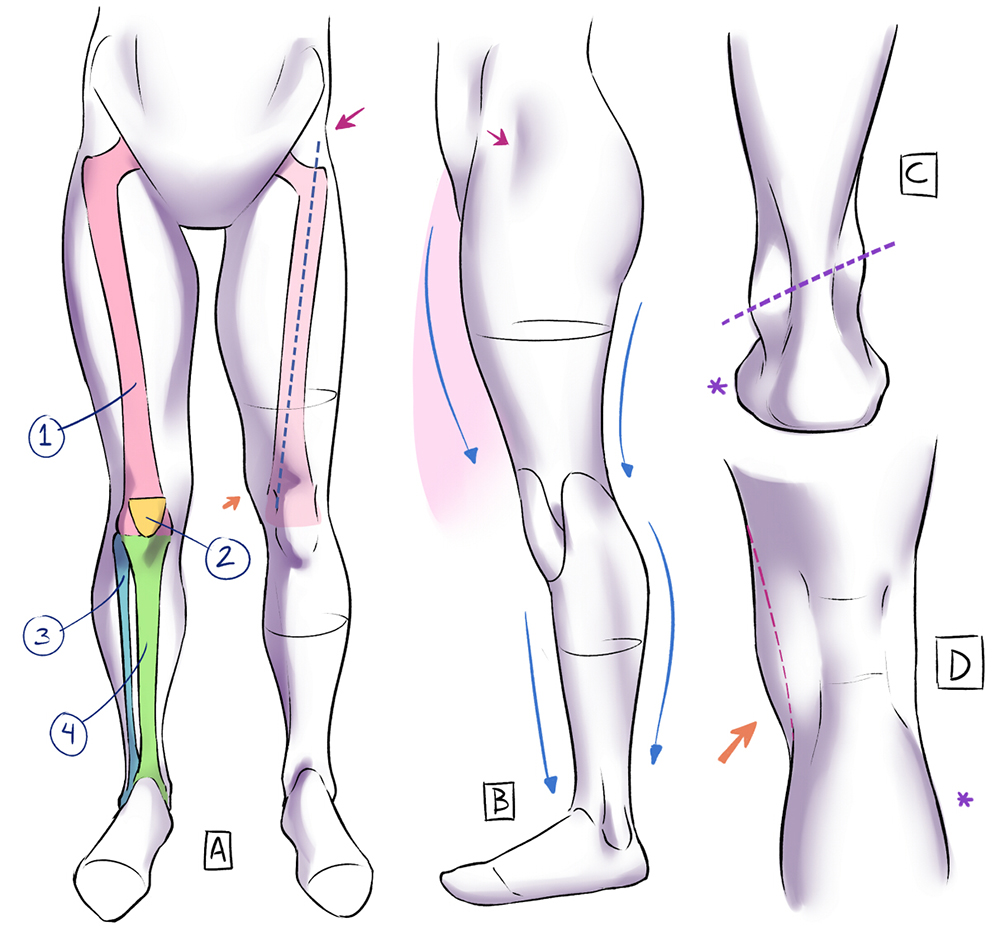
Proportions
According to some academic standards, 7 or 8 heads is the ideal acme of an developed. However, each person has dissimilar proportions according to their concrete characteristics. If yous compare people of different heights yous volition detect that individually they maintain proportions co-ordinate to their own body.
To bear witness this, let u.s. look at the following example: ii adults, a man and a woman. Although the female figure is shorter, her body is divided into 7 heads (which fits within the standard) and the male person figure is only a third of a head taller
In the example I have likewise included the figure of a child. Take into account that, at early ages, the body has not developed completely, so their measures are a trivial undefined. This ane is about 5 heads high.
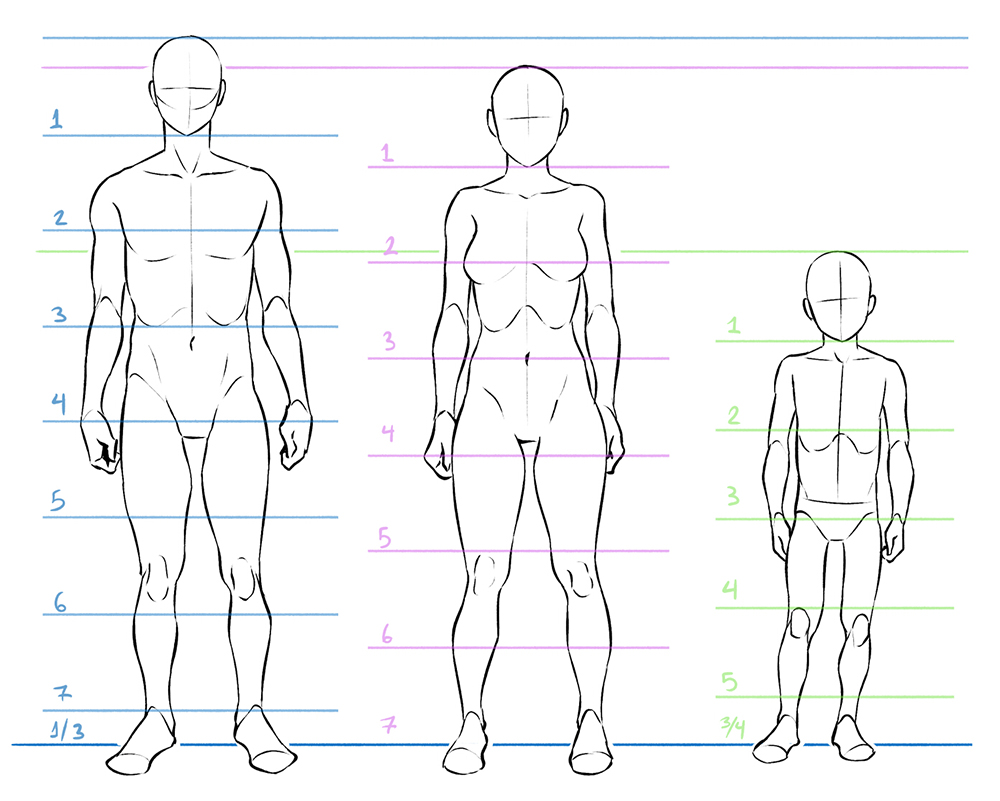
Aside from this, artists do change their characters' proportions totally out of these "ideal" ones, to emphasize their unique characteristics or to heighten their drawing styles. (Merely this is not an excuse to ignore the fundamentals!)
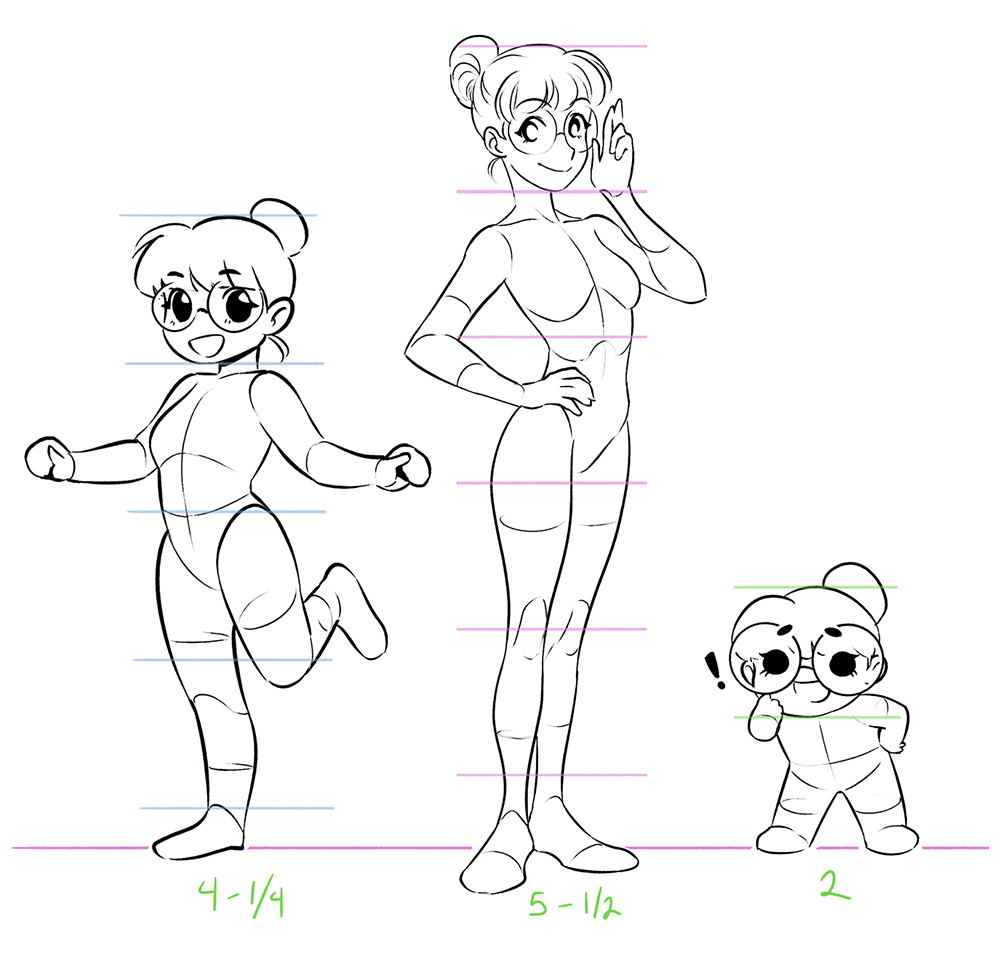
A trick! I like comparing elements of the same length, but to make sure that everything is well proportioned equally I draw. For case, the easily are near the size of the face; the anxiety are every bit long equally the forearm.
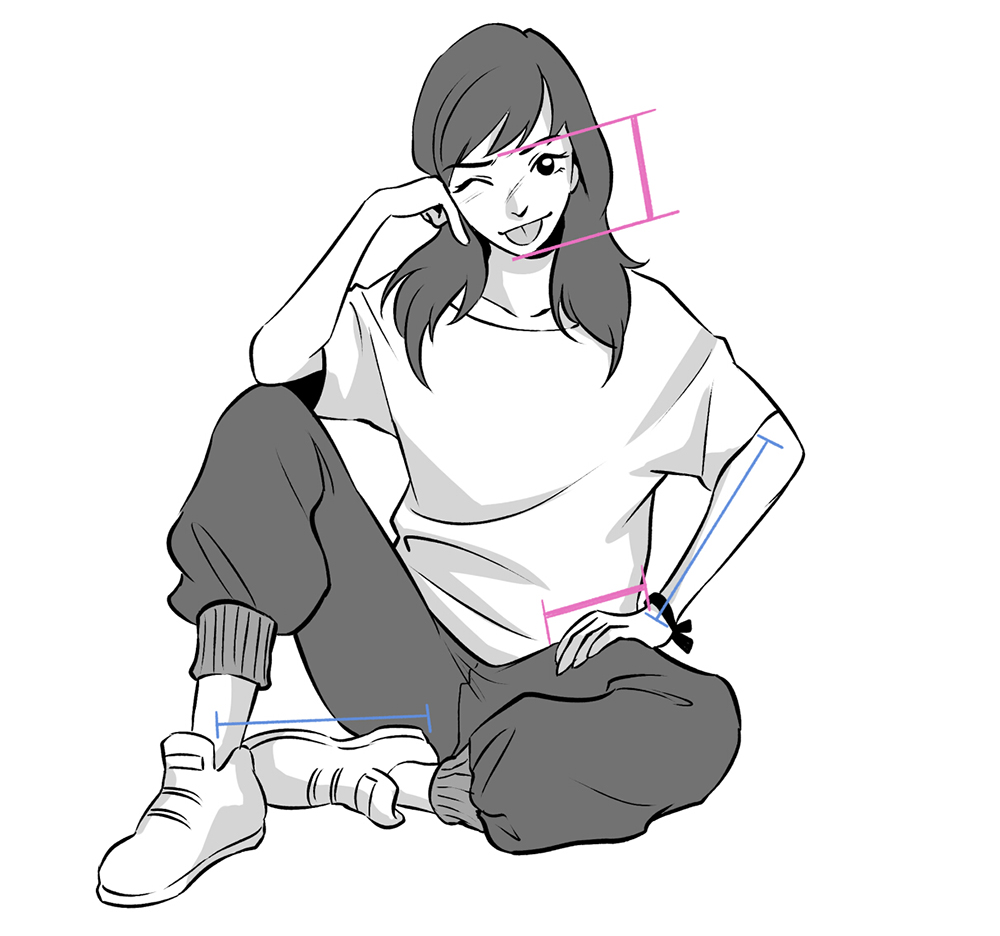
Another slice of data that I find fascinating is the fact that, if you extend your arms, they are side to side the same length as your height!
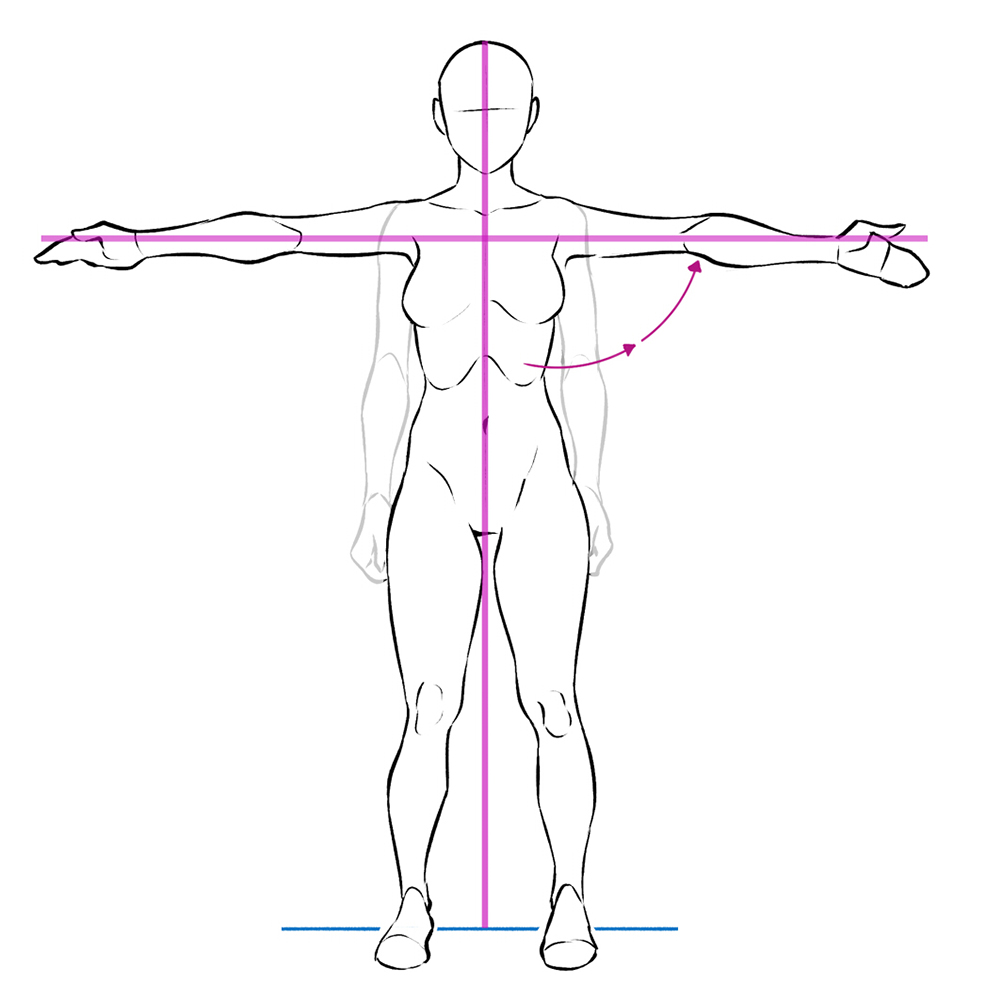
Finally, four points which will aid us to get better at drawing 24-hour interval by twenty-four hour period.
- Observation: Written report how people walk, their poses, the unlike types of bodies… Create a reference gallery in your mind and, if possible, have pictures!
- Think in 3D: To understand a effigy/shape, the best affair is to analyze it from different perspectives.
- Research: Read about body parts, bones, muscles, functions, etc. From an artist'southward bespeak of view is fine, you practise not need to get a dr.! Nosotros are interested in those anatomy parts which impact the shapes and movements of the torso.
- Draw, draw, draw! Exercise cartoon the whole figure and detailed studies of some specially difficult parts.
Thank you very much for reading!
If you similar, you can check out my social networks and my portfolio to see some of my work.
Bring Energy and Life to Your Poses!
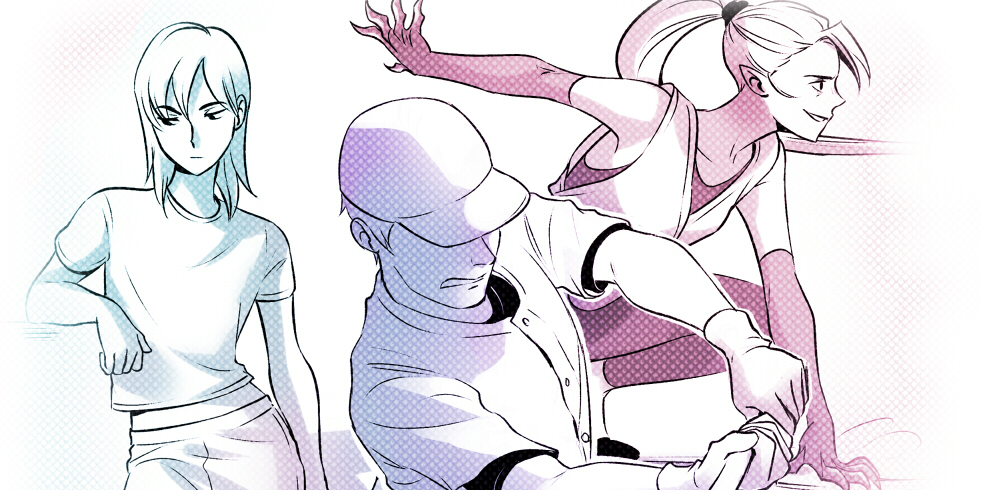
Source: https://www.clipstudio.net/how-to-draw/archives/161109
Posted by: martinguill2000.blogspot.com


0 Response to "How To Learn Anatomy For Art"
Post a Comment